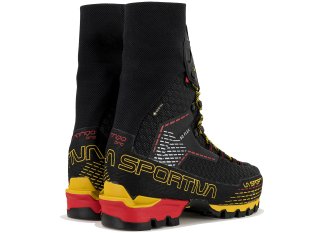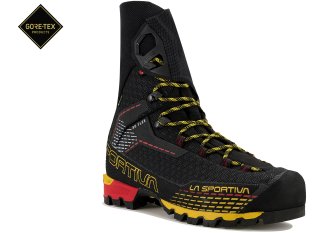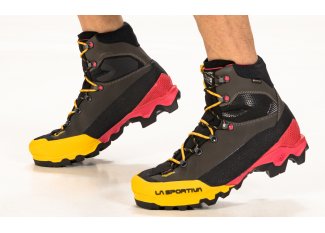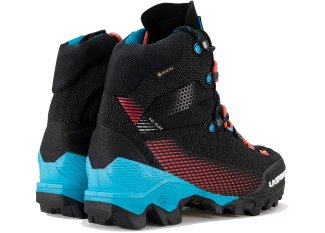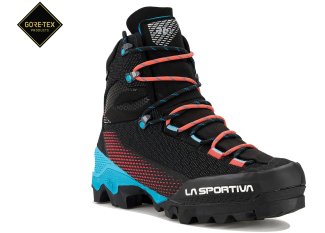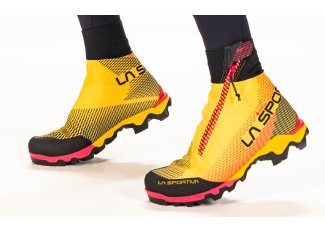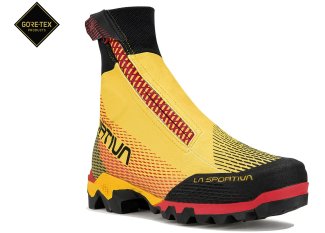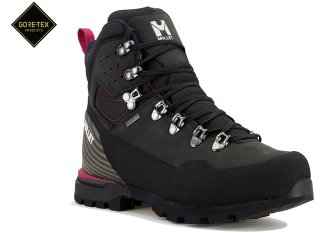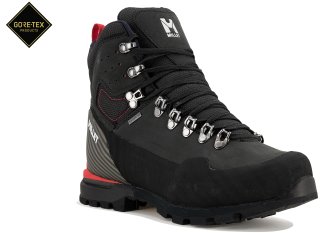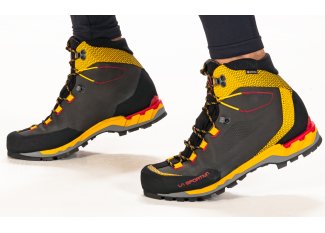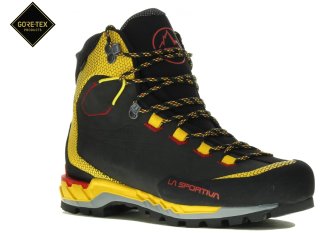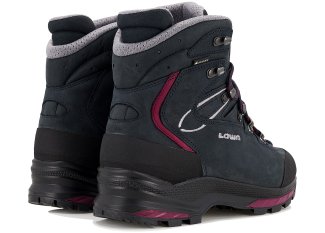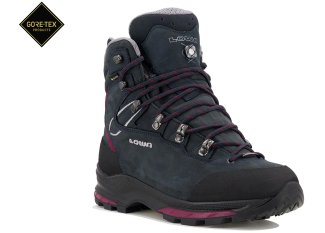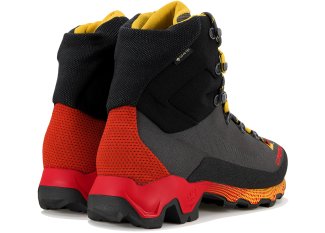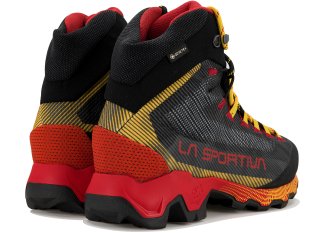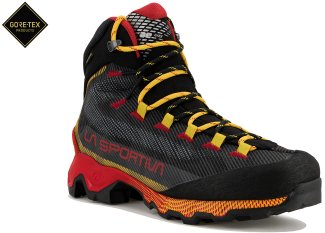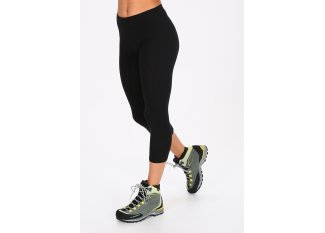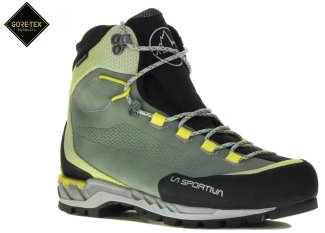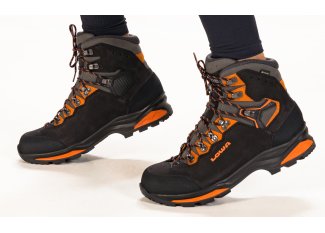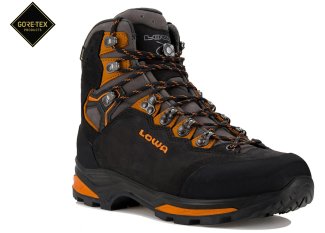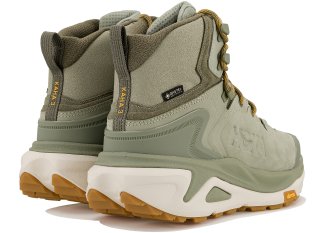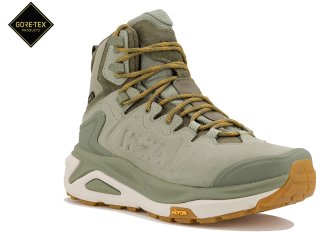Choosing the right hiking shoes
Have you ventured into hiking and developed a taste for it? Here's a little guide to help you gear up properly, making your walks even more enjoyable!
What type of hiking to choose?
Before any purchase of hiking gear, it's crucial to think about the type of hiking you want to do.
Are you into short walks or treks without much terrain difficulty? Or on the contrary, are you into long hikes on challenging terrains, or multi-day treks with about twenty kilos on your back?
Depending on what you plan to do, the model of hiking shoes to target will vary.
Also, pay attention to the weather. Indeed, if you plan to go nordic walking in temperatures below -20°C, you should turn to winter mountaineering shoes and not sandals.
To find the ideal pair of hiking shoes, it might be wise to take a look at our hiking shoes on special offers.
The shaft of the hiking shoe
The shaft refers to the shoe's membrane that structures the entire foot.
If you plan on doing mountaineering, long hiking, or crossing difficult areas (steep terrains, streams, small climbs, etc.), opt for a high shaft on your hiking shoes. These high-top shoes encompass the entire ankle, providing better support and greater safety. You will also be better protected from the weather.
If you are planning simple walks or light trekking for only a few days, a low or medium shaft, hence a low hiking shoe, is more recommended. Lighter and more flexible, they provide better comfort for hikers. However, the ankle is less secured, so be careful on occasional tough trails.
Discover all the hiking shoes for men and women on our site.
The size of the hiking shoe
Too big, and you float in your hiking shoes, losing them at every step. Too small, and you will be uncomfortable and risk injury.
Pay close attention to the size of your hiking shoes. It is better to try them in-store rather than ordering them online.
In general, we recommend choosing a size above your usual city pair to maintain comfort, even when wearing thick socks in winter. Also, be aware that with effort, your feet tend to swell. Test your hiking shoes, walk, tilt your foot, jump around, don't hesitate to simulate as many situations as possible to ensure their comfort. If you have support insoles, install them to try on!
The sole of the hiking shoe
The grip of the sole of hiking shoes is important as it will prevent you from slipping. Soft soles are ideal for flat terrains where they have a good grip. However, since they tend to wear out more easily, it is then advised to use them for easy trails.
On the other hand, for mountaineering shoes or high mountain hiking, it is better to opt for harder soles, which, thanks to their thick lugs, provide a much better grip on rocky and steep terrains.
The Lacing of the Hiking Shoe
The lacing must be adjustable as best as possible. Good hiking shoes always have self-locking hooks to keep the lace tight and allow for more precise tightening.
The lacing should be simple, quick, and durable. A shoe that comes untied during a hike is not only uncomfortable but also presents risks of ankle twisting and injury.
Hiking Shoes: The Little Extras That Make a Difference
The Waterproofing of the Hiking Shoe
A good hiking shoe should provide the best possible comfort. Ideally, it's better to opt for waterproof materials to hike in good conditions.
A waterproof mountain shoe will allow you to cross streams or face downpours without fearing getting your feet wet, especially if the pair has a high shaft.
The Weight of the Hiking Shoe
The weight of the hiking shoe is an important criterion to consider. Indeed, some shoes can weigh up to 2 kilos each, so you're lifting a total of 4 kilos with every step.
Combine this with heavy hiking equipment to carry on your back, and fatigue can quickly set in. Therefore, prefer light hiking shoes and enjoy optimal comfort.
The Support Level of the Hiking Shoe
The level of support is an important criterion to consider when choosing your hiking shoes. Indeed, the shoes must provide adequate ankle and foot support to prevent injuries during hikes, especially on difficult and rugged terrains.
The level of support needed depends on your physique, your hiking experience, and the types of terrains you plan to explore.
Low hiking shoes generally suit light hikes, while high hiking shoes offer better ankle support for mountain hikes or on rugged terrains.
The Quality of the Hiking Shoe
Quality is an essential criterion to consider when buying hiking shoes. Indeed, the shoes must be durable and sturdy to withstand the harsh conditions of hiking.
It's preferable to opt for higher-quality materials that offer good protection and longevity, such as full-grain leather, Gore-Tex, or other high-end synthetic materials.
The quality of hiking shoes can significantly affect the hiking experience, especially in hard-to-reach places. Poor quality shoes can deteriorate quickly, leading to foot injuries or forcing an early end to a hiking trip.
It's crucial to choose high-quality hiking shoes that offer good grip and adequate ankle and foot support. Brands on i-Run, known for the quality of their hiking shoes, are often the best choices to ensure a comfortable and safe hiking experience.
The Aesthetics of the Hiking Shoe
Hiking shoes will accompany you for many years, so it's also important to choose them according to your tastes! It feels great to wear something both comfortable and aesthetically pleasing.
Nowadays, it's possible to find many high-quality and stylish men's models. You'll have plenty of choices on i-Run to find the ideal pair of hiking shoes.
Should You Prefer Leather or Synthetic Hiking Shoes?
Choosing between leather or synthetic hiking shoes mainly depends on individual needs and preferences.
- Leather shoes are generally more durable, offer excellent protection, and are often more waterproof. They are well-suited for long and difficult hikes or for extreme weather conditions. However, they can be heavier and require a longer break-in period.
- On the other hand, synthetic materials are generally lighter, more breathable, and adapt more quickly to the shape of the foot. They are often preferred for shorter hikes or in warm weather. However, they may not be as durable or waterproof as leather shoes.
Considering the environment you plan to hike in, your comfort preferences, and the type of hike you intend to do is essential for making an informed choice.
The Price of Hiking Shoes
The budget for good hiking shoes can be substantial. Depending on the brand, model, and specific features (for example, alpine climbing at very low temperatures), prices can quickly rise.
However, consider this purchase as a long-term investment. Quality hiking shoes will last longer and won't need to be replaced every year.
It's better to invest in high-quality hiking shoes, even if they are a bit more expensive. They will indeed last longer and offer better protection and comfort.
How to Choose the Right Size for Hiking Shoes?
Choosing the right size for hiking shoes is crucial to ensure optimal comfort and avoid injuries. In general, it's recommended to opt for a size above your usual size to accommodate the natural swelling of the feet during a long walk and the wearing of thicker socks.
When trying on hiking shoes, make sure you have enough space to move your toes without touching the front of the shoe, but without your foot also sliding inside. It's better to try them on at the end of the day when your feet are naturally more swollen.
Finally, don't forget to test them by walking and simulating different types of movements you will perform during the hike to ensure their comfort.
Choosing a model of hiking shoes is based on a combination of factors, including comfort, support, quality, size, and price. It's important to research on i-Run and compare different models to find the pair of hiking shoes that best suits your needs and budget.
